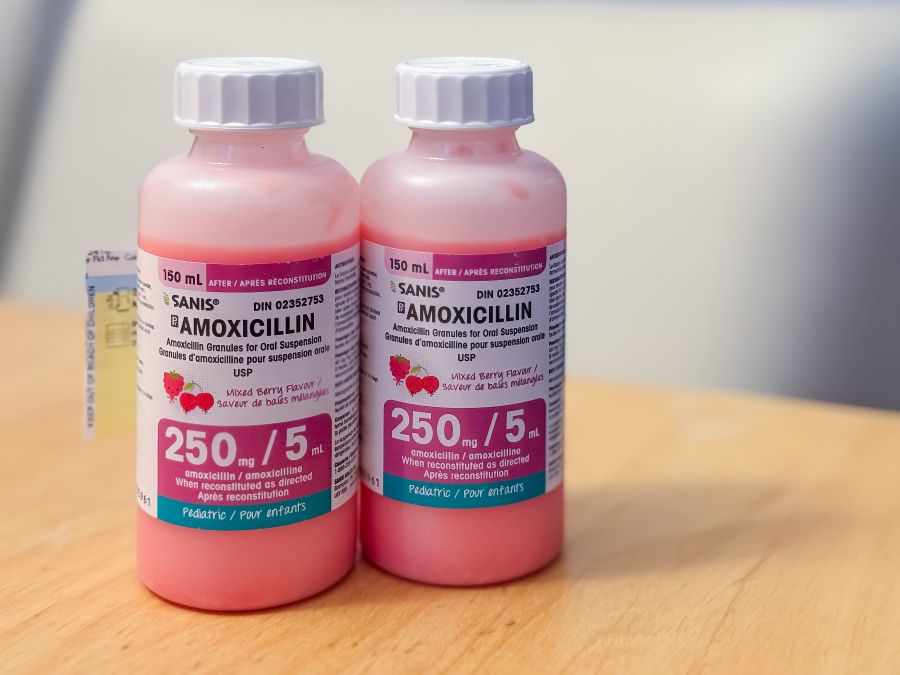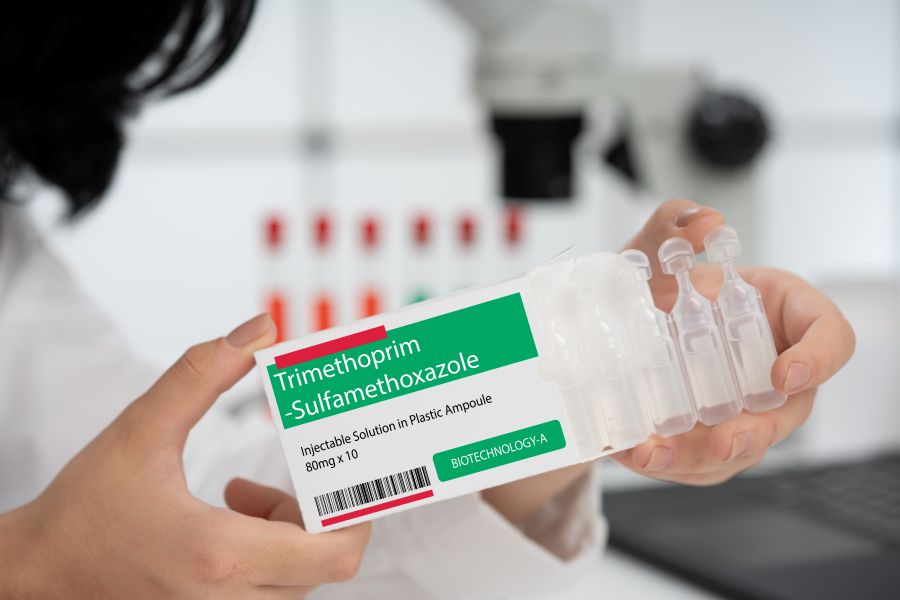Amoxicillin is among the most widely prescribed antibiotics globally, commonly used to treat infections ranging from strep throat to urinary tract infections. Despite its effectiveness, amoxicillin can sometimes trigger an adverse skin reaction known as an amoxicillin rash. Understanding why these rashes occur, their implications in the short and long term, and the potential cross-reactivity with other antibiotics is critical for effective treatment and management. This guide provides a detailed overview based on current scientific research.
What is an Amoxicillin Rash?
An amoxicillin rash is a skin reaction that occurs after taking the antibiotic amoxicillin, characterized by red, flat, or raised itchy spots. It may emerge several days after initiating treatment, making it confusing for patients to recognize its cause immediately.
Causes and Types of Amoxicillin Rash
1. Non-Allergic Amoxicillin Rash:
Often referred to as an “amoxicillin rash after 7 days,” this type is usually non-allergic and appears due to a reaction between amoxicillin and a concurrent viral infection, especially Epstein-Barr virus (mononucleosis). Recent studies suggest this rash occurs in approximately 5-10% of amoxicillin treatments, primarily in pediatric populations (Patel et al., 2022).
2. Allergic Amoxicillin Rash:
An allergic rash is immune-mediated, typically presenting as hives (urticaria), swelling, or even more severe reactions like Stevens-Johnson syndrome. A delayed allergic reaction to amoxicillin can occur several days into treatment, making early identification challenging. Studies estimate true allergic reactions occur in less than 1% of individuals taking amoxicillin (Blumenthal et al., 2021).
Identifying Amoxicillin Rash
Symptoms usually include:
- Small, red or pink spots
- Itchy skin (pruritus)
- Flat (macular) or slightly raised (papular) lesions
- Typically widespread, affecting the torso, limbs, and occasionally the face
Short-Term Implications of Amoxicillin Rash
In most cases, an amoxicillin rash is benign and resolves within days after discontinuing the antibiotic. It often requires minimal treatment beyond basic comfort measures, like antihistamines (Benadryl or Zyrtec) and topical hydrocortisone cream for itch relief. Adequate hydration, gentle skin care, and avoiding irritants significantly speed up recovery. Also make sure not to continue scratching the rash or it can exacerbate the itchiness and open the skin up to bacterial infections.
Immediate Treatment Recommendations:
- Discontinue amoxicillin under medical guidance
- Administer over-the-counter antihistamines for itch management
- Apply topical corticosteroids for symptomatic relief
- Maintain adequate hydration and gentle skincare practices
Long-Term Considerations and Risks
While most amoxicillin rashes are benign, recurrent or severe reactions necessitate careful long-term management. Allergy testing becomes critical to differentiate true allergic reactions from non-allergic ones. Proper identification of a genuine allergy helps avoid future severe reactions, including anaphylaxis, a life-threatening condition requiring immediate medical intervention (Trubiano et al., 2021).
Long-term allergy management includes:
- Comprehensive allergy testing (skin prick or drug challenge)
- MedicAlert identification for confirmed allergies
- Clear documentation in medical records to prevent future exposure
Can You Develop an Amoxicillin Allergy Later in Life?
Recent research confirms it is possible to develop an allergy to amoxicillin and other antibiotics later in life, even if previously well-tolerated (Macy & Ngor, 2021). Changes in immune response or sensitization from repeated exposure can trigger an allergic reaction over time. Our immune system continues to change over time as well. If you suspect a newly developed allergy, consult an allergist for evaluation and testing.
Cross-Reactivity and Other Antibiotics You Could Be Allergic To
Amoxicillin belongs to the penicillin class, and allergies to amoxicillin can imply cross-reactivity to other penicillin-based antibiotics such as:
- Penicillin G and V
- Ampicillin
- Dicloxacillin
A smaller percentage of individuals allergic to penicillin may also react to cephalosporins, including:
- Cephalexin (Keflex)
- Cefuroxime (Ceftin)
- Ceftriaxone (Rocephin)
Recent data indicate that cross-reactivity between penicillins and cephalosporins is around 2% to 5%, emphasizing cautious prescribing and proper allergy assessments before use (Saxon & Beall, 2021).
Helpful Tips to Avoid Antibiotic Allergic Reactions
- Inform all healthcare providers about your antibiotic allergies clearly and consistently.
- Always carry emergency antihistamines or an epinephrine auto-injector (EpiPen) if previously diagnosed with severe allergic reactions.
- Regularly update allergy testing every 5-10 years, as sensitivities can evolve.
FAQ: Key Questions Answered
Q: Is an amoxicillin rash dangerous?
A: Most cases are harmless and resolve quickly once the medication is stopped, but severe allergic reactions require immediate medical attention. Symptoms of serious allergy include trouble breathing, lip and tongue swelling, and facial swelling.
Q: How long does an amoxicillin rash last?
A: Typically, symptoms subside within 3-7 days after discontinuing amoxicillin, depending on individual response and severity.
Q: What should I do if I suspect an allergic reaction to amoxicillin?
A: Immediately consult a healthcare provider. Stop the medication under medical supervision, and consider allergy testing to confirm and document your allergy status.
Recent Research and Literature
- Patel et al. (2022) “Amoxicillin Rash in Pediatric Patients: Viral Interaction and Clinical Outcomes,” Pediatric Dermatology Journal.
- Blumenthal et al. (2021) “Evaluating True Penicillin Allergy: Diagnostic Accuracy and Management,” Journal of Allergy and Clinical Immunology.
- Macy & Ngor (2021) “Adult-Onset Antibiotic Allergy: Incidence and Diagnostic Strategies,” Annals of Allergy, Asthma & Immunology.
- Trubiano et al. (2021) “Severe Antibiotic Allergic Reactions: Identifying Risk Factors,” Clinical Infectious Diseases Journal.
- Saxon & Beall (2021) “Cross-reactivity Between Penicillins and Cephalosporins: Current Evidence,” Drug Safety Journal.
Conclusion: Empowering Your Health and Safety
Understanding amoxicillin rash, its potential implications, and treatment approaches empowers individuals to manage their antibiotic use safely and effectively. Staying informed, maintaining clear communication with healthcare providers, and undertaking proactive allergy management significantly reduce risks. Advances in allergy testing and personalized medicine promise even more precise treatments in the future, ensuring safer antibiotic therapy tailored to individual needs. Always consult healthcare professionals promptly for personalized advice and interventions.

This article reviewed by Dr. Jim Liu, MD.
There’s nothing more important than our good health – that’s our principal capital asset.
#medical #telehealth #umedoc










